Dell SE2717H 27-inch IPS FreeSync Gaming Monitor Review
Why you can trust Tom's Hardware
Grayscale, Gamma & Color
Grayscale Tracking
Our grayscale and gamma tests are described in detail here.
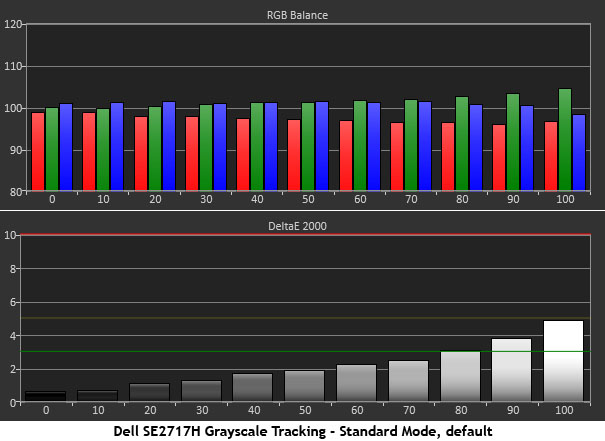
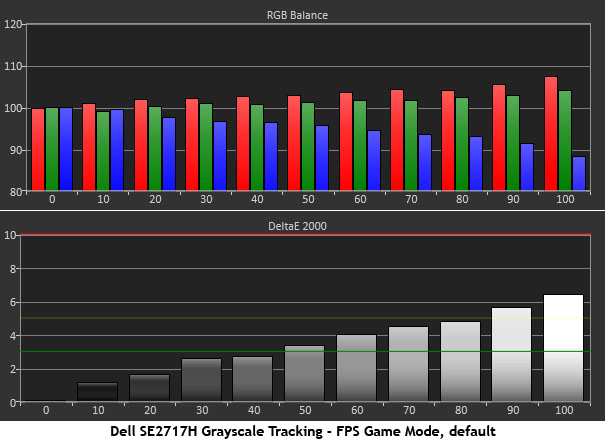
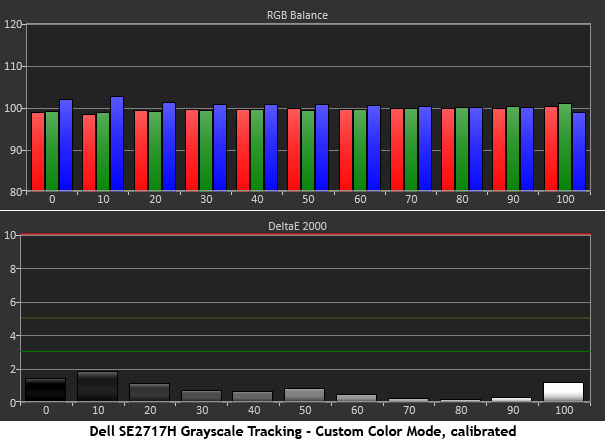
The SE2717H offers 10 picture modes, each with slightly different grayscale tracking behavior. Standard is our recommendation for users who want the best possible accuracy without calibration. It also happens to be the default mode. You’ll just be able to see a green tint at the 90 and 100% brightness levels, but all the others are free of visible error.
Gamers might be tempted to try the FPS Game mode, but we don’t think its white point is ideal. Red/green errors rise along with brightness and you’ll see the problem from 50% on up.
If you have calibration gear, or you’d like to try our settings, choose Custom Color for access to the RGB controls. A few tweaks will maximize the SE2717H’s performance potential. Now the errors are extremely low. We’ve gone from very good to excellent in the grayscale tracking department.
Comparisons
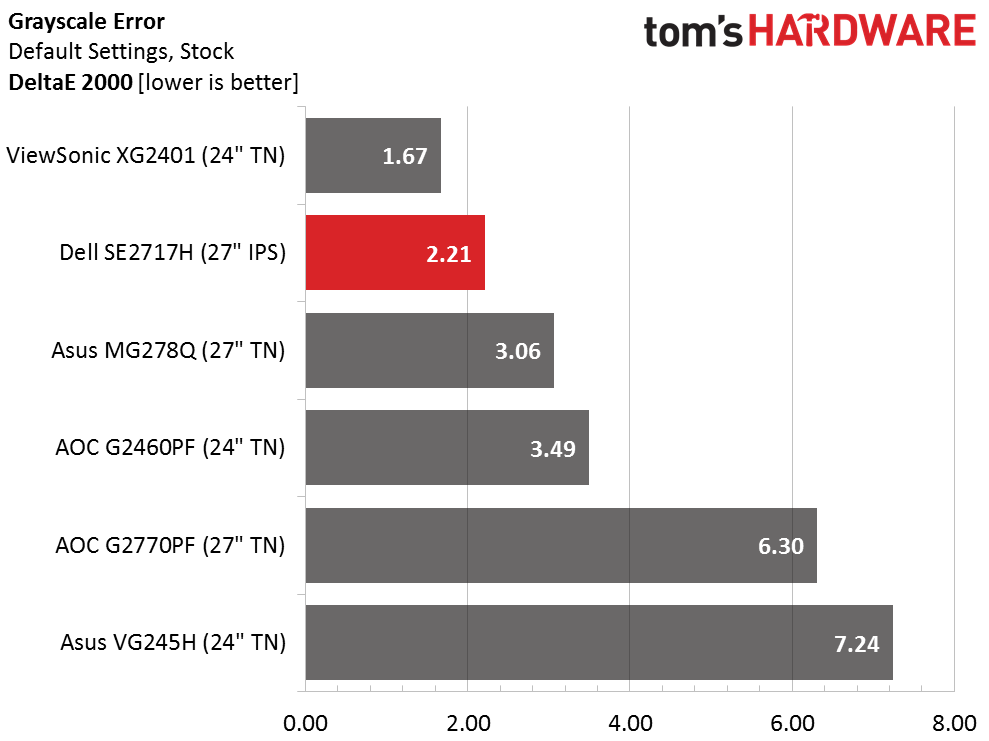

The SE2717H becomes the latest monitor on our list of displays that don’t require calibration. Its second place finish in both the before and after calibration measurements is a boon to the price/performance ratio. It’s not too difficult to find gaming monitors that can match grayscale results with professional screens, but at this low price point, such accuracy is more rare.
Gamma Response
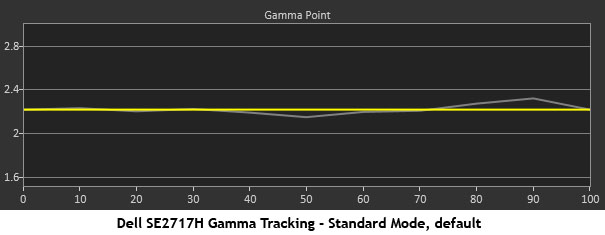
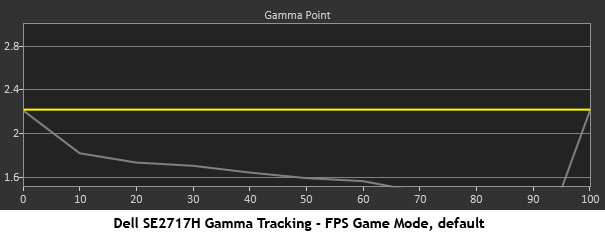
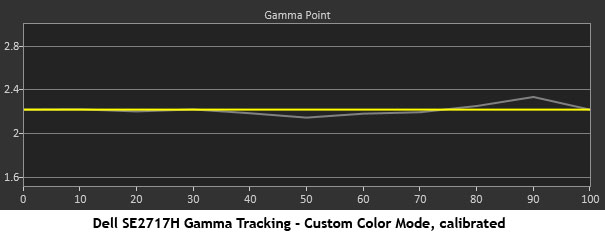
The SE2717H’s best metric by far is gamma tracking. With no adjustments at all, the trace is almost invisible as it follows the 2.2 line with near perfection. What that means is absolutely no detail is clipped, and color tracking, both in the saturation and luminance tests, will be very tight. It also increases perceived contrast. Getting gamma right can go a long way towards improving image depth in monitors that don’t have spectacular native contrast. Again, the Dell is outperforming its price tag.
The FPS Game mode presents a skewed gamma result because it engages the Dynamic Contrast option. That particular setting is grayed out in Custom Color and Standard modes. We suggest avoiding it for two reasons. First, it will clip highlight and shadow detail making gameplay challenging. And second, you can see the image brightness change with content. The compensation lags just a little behind the action and creates a pumping effect; not a distraction you’ll want during intense action sequences, or when watching video content.
Get Tom's Hardware's best news and in-depth reviews, straight to your inbox.
Comparisons
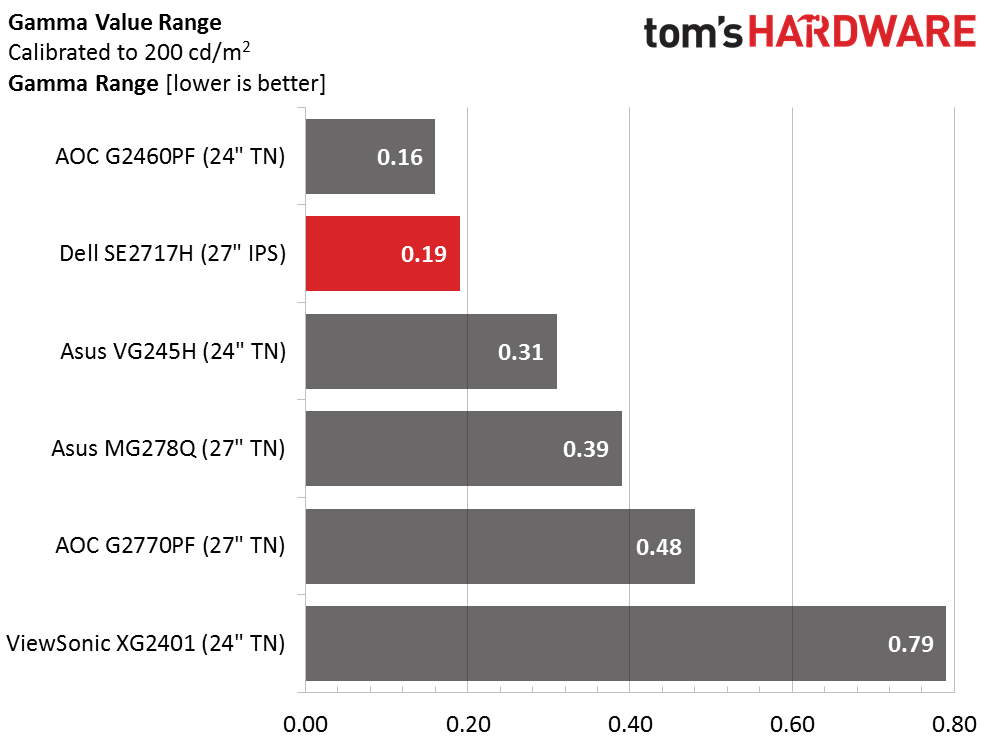
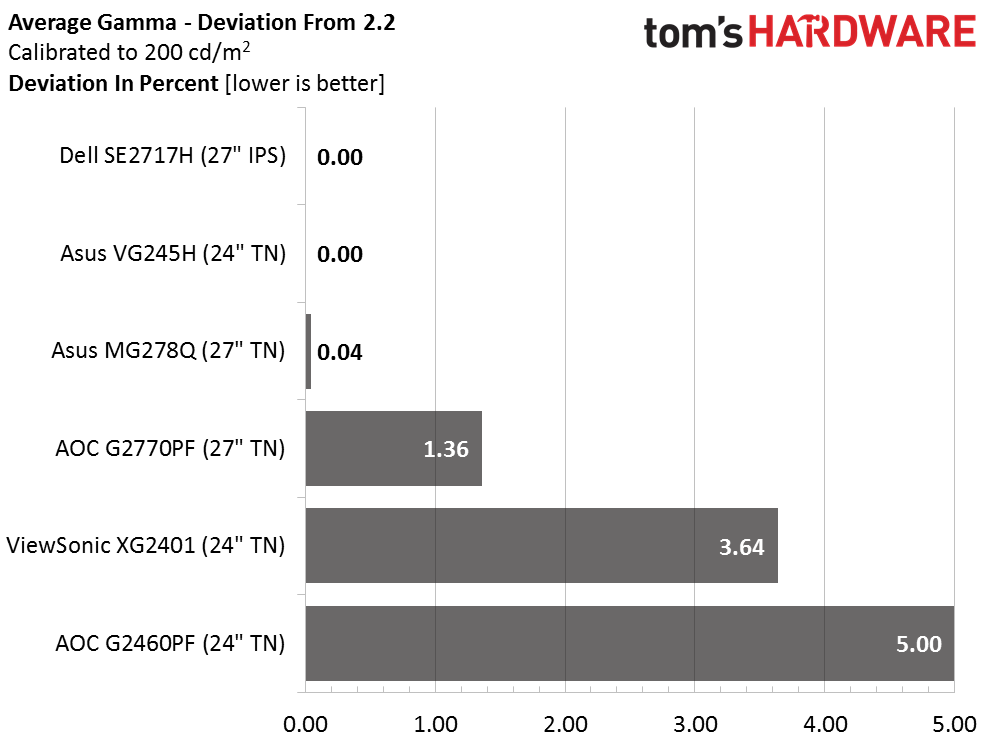
A .19 range of gamma values is among the lowest in our database. It compares favorably with the most accurate displays we’ve reviewed. And only a very few screens have ever measured right on the 2.2 average in our test. This is excellent performance.
Color Gamut & Luminance
For details on our color gamut testing and volume calculations, please click here.
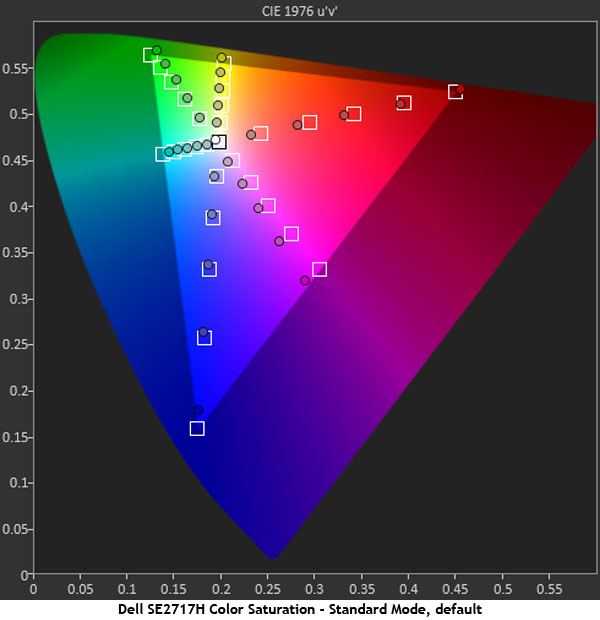
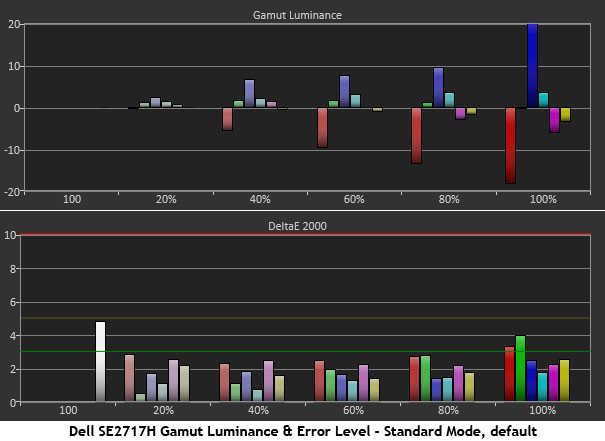
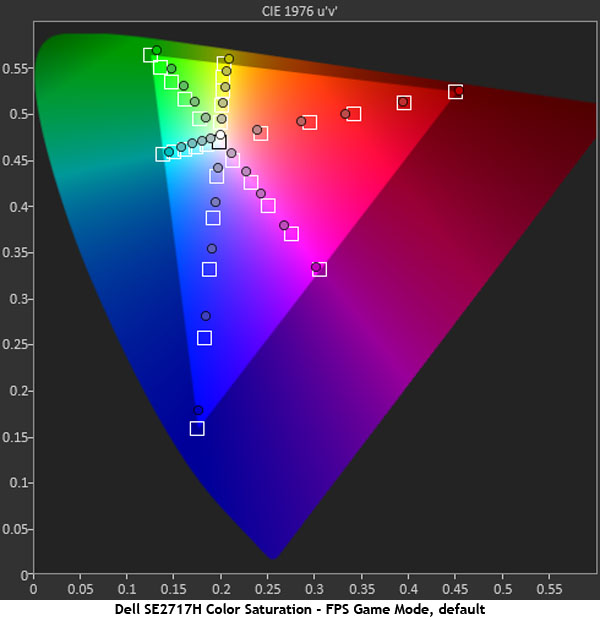

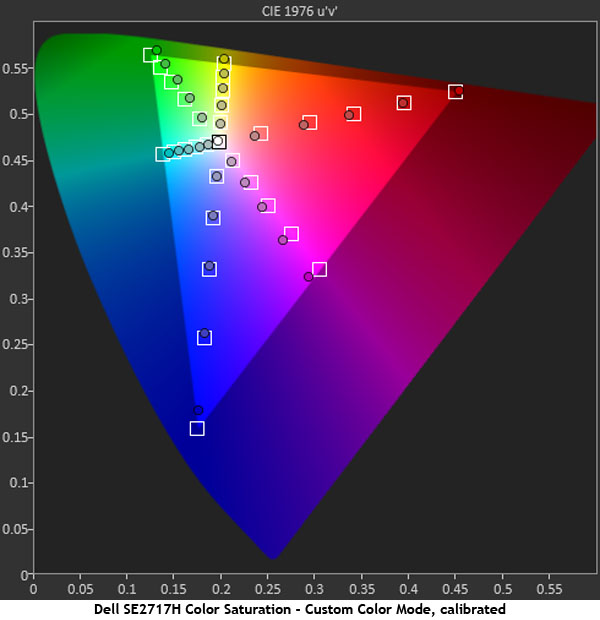
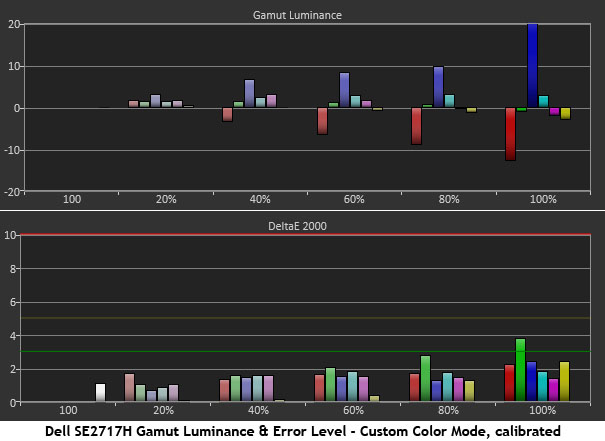
The Standard mode gives us a good look at the SE2717H’s native color gamut. Blue is slightly under-saturated no matter what mode you choose. And red misses a couple of its saturation targets near the center of the triangle. These are minor points though. Color luminance is right at the neutral point almost across the board. The resulting errors are pretty much impossible to see with the naked eye.
To measure the FPS Game mode, we had to turn off Dynamic Contrast so the saturation chart looks about the same as the one for Standard. Luminance is quite a bit higher though, which gives colors an artificial look. This is further reason to stick with either Standard or Custom Color regardless of application or game type.
Calibrating the Custom Color mode brings every single color point on target except for 100% blue, which is still a little short of the mark. Fortunately, its luminance level has been raised to compensate, making the actual error invisible. All DeltaE values are now below three except the brightest green, which just crosses the line. It really doesn’t get much better than this.
Comparisons

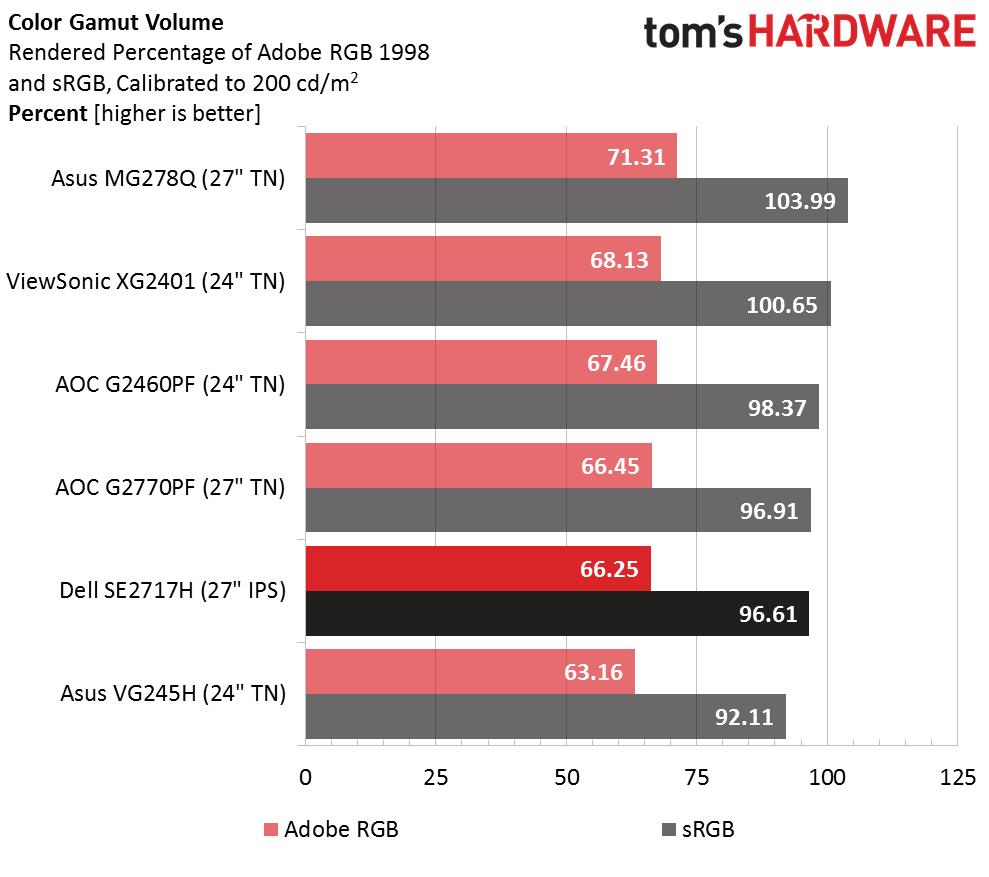
There’s little reason to calibrate the SE2717H for the sake of gamut accuracy. In the default Standard mode, we measured 2.14dE before adjustments and 1.50dE after. That's an imperceptible change, but we always believe in wringing every last drop of performance from every display we test. Dell is certainly offering a high-quality product at an extremely attractive price.
sRGB gamut volume is just a little short of 100% due to under-saturation in the blue primary. If you look back at the CIE charts, you’ll see that cyan and green are pulled in a little as well. We’re nitpicking here, and none of this will have any impact on image quality for gaming, video, or productivity. Users needing a proofing tool will want to use an ICC profile with the SE2717H.
Current page: Grayscale, Gamma & Color
Prev Page Brightness & Contrast Next Page Viewing Angles, Uniformity, Response & Lag
Christian Eberle is a Contributing Editor for Tom's Hardware US. He's a veteran reviewer of A/V equipment, specializing in monitors. Christian began his obsession with tech when he built his first PC in 1991, a 286 running DOS 3.0 at a blazing 12MHz. In 2006, he undertook training from the Imaging Science Foundation in video calibration and testing and thus started a passion for precise imaging that persists to this day. He is also a professional musician with a degree from the New England Conservatory as a classical bassoonist which he used to good effect as a performer with the West Point Army Band from 1987 to 2013. He enjoys watching movies and listening to high-end audio in his custom-built home theater and can be seen riding trails near his home on a race-ready ICE VTX recumbent trike. Christian enjoys the endless summer in Florida where he lives with his wife and Chihuahua and plays with orchestras around the state.